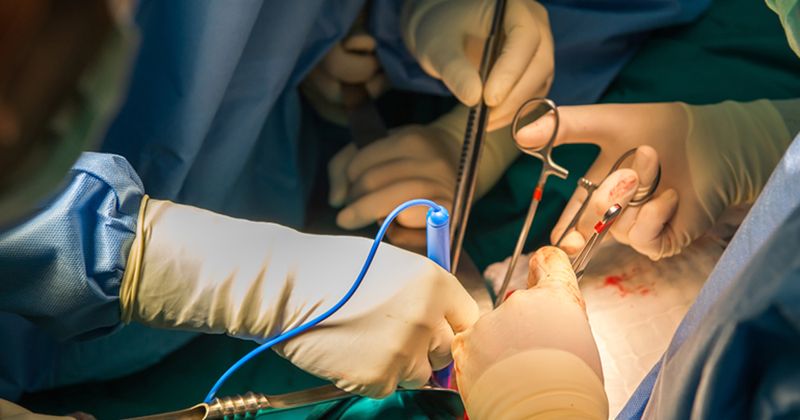Although commonly misclassified, all forms of deceased donor AKI were linked to graft loss
Deceased donor AKI, both ongoing and recovery, was associated with higher rates of graft failure following kidney transplantation, a study that determined AKI using a back-estimation of baseline serum creatinine showed.
This method was implemented “as a way to overcome inconsistencies in donor AKI classification during the course of kidney procurement,” according to the investigators who also found that different approaches to serum creatinine measurements led to varying AKI determinations.

Baseline serum creatinine back-estimation
“The Kidney Diseases Improving Global Outcomes (KDIGO) guidelines define AKI by an absolute increase of [at least] 0.3 mg/dL or [at least a] 50% increase in SCr over baseline. The baseline value is generally defined as the average of all SCr concentrations measured within the year before admission,” Rémi Lenain, MD, of the department of nephrology at Lille University Hospital in France, and colleagues wrote. “During procurement, however, this information is frequently unavailable. Most published studies have therefore taken either admission SCr value or the lowest SCr concentration measured throughout the procurement procedure as baseline.
Unfortunately, both approaches are inherently limited by possible misclassification of donor AKI status. Indeed, consistently increased SCr values do not allow distinguishing between a community-acquired AKI and a preexisting chronic kidney disease (CKD). Moreover, donors who had recovered from AKI before organ procurement would be systematically ruled as AKI-free. It is therefore plausible that misreporting of donor AKI status may have influenced risk estimates in published studies. In this scenario, a refined classification system for donor would be valuable to account for misclassification bias.”
To remedy “the absence of a reliable baseline SCr concentration,” Lenain and colleagues estimated a Modification of Diet in Renal Disease (MDRD) study-derived baseline SCr value for an assumed eGFR of 75 mL/min/1.73 m2 (median number of measured SCr values during procurement for each donor was four).
AKI and graft failure
A total of 26,786 patients who received a single kidney allograft from brain-dead deceased donors between 2006 and 2017 were included, with the refined classification system for donor AKI suggesting 19,276 had no AKI; 1,745 had undetermined AKI/CKD; 2,392 had recovery from AKI and 3,373 had ongoing AKI.
The primary outcome of the study was death-censored graft survival, which was defined as time from transplant to graft failure (specifically, the return to dialysis or preemptive re-transplantation).
During a median follow-up of 5.7 years, researchers observed 4,458 kidney graft losses.
Results of Cox regression analysis showed that, compared with no AKI, all forms of deceased donor AKI were associated with increased risks for graft failure (HR of 1.24 for ongoing AKI and HRs of 1.18 for undetermined AKI/CKD and recovery from AKI).
Misclassification of AKI
Lenain and colleagues also noted a variety of discrepancies related to AKI classification based on how serum creatinine was measured.
“When baseline SCr was defined as the first SCr value at admission or the lowest SCr value during organ procurement, 28.3% and 57.7% of kidneys were considered with AKI respectively [vs.] 28% in our classification and 24.8% when adapted to gender and age,” the researchers wrote. “[Forty-nine percent] of recipients classified as undetermined AKI/CKD and 90% of those with recovery from AKI would have been labeled as no AKI. Furthermore, 29% of no-AKI recipients would have been misclassified as AKI when baseline SCr was defined as the lowest SCr concentration measured as shown by alluvial diagrams.”
According to Lenain and colleagues, SCr baseline back estimation provides “a reliable method to overcome misclassification,” which can occur when utilizing less comprehensive approaches.
“These results suggest that not only ongoing AKI, but also more nuanced forms of deceased donor AKI (eg, recovery from AKI – which may be characterized by a normal last SCr value), may exert a detrimental impact on graft survival,” the researchers concluded.
“ ... A better appreciation of donor AKI is a critical step to further develop appropriate conservative strategies.”

